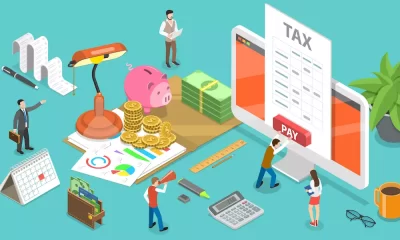Management
Are you and your employee headed in the same direction?
Career development is about identifying what the current strategic goals for your business are and then working with your staff to ensure that they have the right knowledge, skills and abilities to achieve these goals.
Career development is about identifying what the current strategic goals for your business are and then working with your staff to ensure that they have the right knowledge, skills and abilities to achieve these goals. In addition to this, career development is about identifying what the future strategic goals are for the business and then identifying which staff are interested in working towards these future goals and once again ensuring that they have what the necessary skills to achieve them.
The advantages to using career development systems in your organisation are numerous, they:
- Enable you to develop skills internally rather than needing to recruit skills into the business or outsource your core business
- Enable your business to develop by growing your intellectual capital
- Enable you to make good use of your employees’ knowledge and retain those valuable to the business
- Align individual employees’ career development with the strategic aims of the business, enabling you to determine what skills will be needed in the future and facilitate workforce planning
- Support the development of succession plans and promotion pathways for high- performing employees
- Empower and motivates employees who may require greater challenges to achieve job satisfaction
- Prepare employees for advancement to jobs where their abilities and potential can be fully realised
- Enable you to work to the strengths of employees, ultimately getting the best out of them
A quick guide to Career Development
Step One: Identify and clearly define the current and future strategic goals of your business.
Step Two: Establish what knowledge, skills, and abilities you require your staff to possess in order to achieve these goals.
Use your existing job descriptions and person specifications to assist you.
Step Three: Determine the existing levels of knowledge, skills and abilities of your staff, to help determine what areas your employees require training. By doing this it helps to ensure that training is aligned to business and employee needs. You can use the regular performance appraisal catch-ups with your employees to determine what training they feel they might need, and to help monitor how employees are doing with regards to the business goals.
Step Four: Often employers use the end of year performance appraisal meeting to discuss with their employees what career directions they have considered. This helps you to determine which employees are interested in development opportunities and you can then determine how these employees will help you achieve the future goals of the business and what training and resources they might require in order to do so. From my experience you want to create an environment where employees feel they can raise this with you at any time as the end of year meetings might be too late.
Factors to consider
The above quick guide emphasises that it is important to establish what your employees’ knowledge, skills and abilities are so you can determine what career development opportunities they might need, but before you rush off and start offering your staff training opportunities, I want you to consider two other important factors – values and motivators.
Values: In the context of business, values are the moral thread which underpins much of our organisational policies and procedures. Ideally what you ‘hope’ is that the values which your employees hold dear are similar to the values which are important to the company, this helps to improve what is called person environment fit (P-E Fit). The better this fit is, the more likely the employee will be committed to an organisation and its goals.
Generally, values are stable by the time we reach early adulthood, but circumstances can change the importance we place on these values. For example, an employee who has recently started a young family might value the importance of friendship and flexibility more than before their new role as a parent, so it is important to check in with your employees, as what was important to them a year ago might be less important now.
Motivators: Motivators are the factors which not only determine what goals we will aim for, but also how much effort we will put in to achieving these goals. From a career development perspective it is important to establish what a person’s motivators are so as to determine whether they will be driven to meet these new goals; it is very costly to provide training to someone for a new role if they are not motivated by the key aspects of the role.
My final words on Career Development
One final tip I have on career development, you don’t have to promise development opportunities to everyone, if the training isn’t aligned to business needs or it doesn’t make sense to invest into an employee, then don’t! However, if you do decide to work with an employee to develop their career it has pay- offs for all involved. For the business it means that current and future business needs are met, for employees it means that their professional needs are being met by their company, all of this can result in increased work performance, job satisfaction, organisational commitment and decreased staff turnover.






